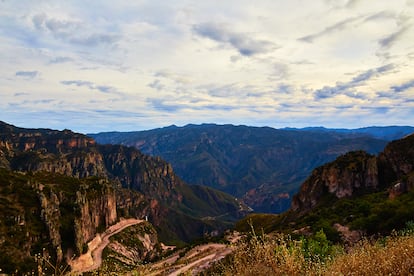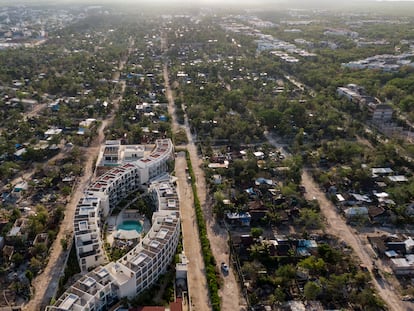Mexico’s 45 new Magical Towns: The tourist attractions they offer and what you should know about them
24 states have had areas designated as such for the first time, bringing the country’s total number of unique destinations of cultural interest to 177


Each year, Mexico’s state governors nominate their region’s tourist destinations as candidates to be named Magical Towns. They do so to attract tourism and grow the economy. As Mexico’s Secretary of Tourism Miguel Torruco Marqués noted, “from today on, [these Magical Towns] will be important drivers of travel, they will attract greater flows of tourists and, consequently, will increase economic income, investment and employment, benefiting our local populations.”
For a municipality or region to be designated a Magical Town, it must have a population of at least 20,000 inhabitants; be located less than 200 kilometers (around 124 miles) from a major tourist destination; maintain a tourism development program for at least three years; guarantee health and public safety for tourists; and have unique symbolic or cultural attractions.
The Secretary of Tourism reported that it received 123 nominations from 27 States, from which it selected 45 that meet the aforementioned requirements. The Magical Town initiative began 22 years ago, and 132 Magical Towns had previously been designated. With the new selections, Mexico now has 177 in total.
Aguascalientes, Baja California Sur, Campeche, Chiapas, Chihuahua, Coahuila, State of Mexico, Guerrero, Hidalgo, Jalisco, Michoacán, Morelos, Nayarit, Nuevo León, Puebla, Querétaro, Quintana Roo, San Luis Potosí, Sinaloa, Sonora, Tabasco, Veracruz, Yucatán and Zacatecas all had a town selected.
Delfina Gómez, the governor-elect of the State of Mexico, and Alfredo del Mazo, the current governor, have invited people to visit the towns that were recently selected. “We are the state with the largest number of Magical Towns in the country. As of today, we have 12. We invite you to get to know them!” wrote Del Mazo.

The State of Mexico’s new Magical Towns are Otumba and Jilotepec. The municipality of Otumba — which gets its name from the Nahuatl word Otompan and means “place of Otomi”— is known as the site where Cuitláhuac defeated Hernán Cortés on La Noche Triste (The Sad Night). Its aqueduct, Railroad Museum and churches like La Purísima Concepción and the Oxtotipac Convent are some of Otumba’s most important tourist attractions. The Gonzalo Carrasco Museum also merits special mention as the former home of Jose Maria Velasco, one of Mexico’s most important painters.
For its part, Jilotepec offers natural environments that invite tourists to spend time outdoors at Las Peñas Ecotourism Park, the Danxho Dam and the old Doxhicho hacienda [ranch]. This Magical Town’s main site is the Sanctuary of La Piedrita, where an image of the Virgin of Guadalupe is carved on a stone, a symbol that is much appreciated by the devout in this area.
After 11 years of not having an entry on the list, the State of Sonora now boasts two Magical Towns, San Carlos and Ures. The current state governor, Alfonso Durazo, shared his excitement: “Today, Sonora is seen as an important tourist option, and we will continue to promote its beauty and virtues.”
San Carlos is known as Nuevo Guaymas, and it has become one of Sonora’s main centers of tourism. Its attractions include Arcos y cuevas (Arches and caves, rocks in the middle of the sea where marine life can be enjoyed), the Sonora dolphinarium, the Tetakawi hill and a panoramic viewpoint to see the best sunsets on the Sea of Cortez, which National Geographic called “a world-class viewpoint to observe wildlife including dolphins, pelicans and whales.”

Ures served as the capital of Sonora twice, until Hermosillo became a commercial city by relying on its geography. Known as the Athens of Sonora, the town of Ures offers haciendas [ranches], churches and a central plaza. Standout spots include San Miguel Arcángel temple, its municipal palace and the El Labrador hacienda.
Campeche’s governor, Layda Sansores, celebrated that Candelaria joined the state’s two other Magical Towns, Palizada and Isla Aguada. Candelaria is located in the middle of the jungle of Campeche; the river of the same name flows through the municipality, which is why visitors gather here to tour it. The area’s natural attractions include ecotourism zones and pre-Hispanic ruins. Some highlights are the Salto Grande waterfall, one of the most impressive sights for its height and views; the archaeological site of El Tigre or Itzamkanac, where it is said that Cortés killed Cuauhtémoc; and the Pedro Baranda springs, fed by three kilometers of subterranean rivers.
The governor of Nuevo León, Samuel García, also lauded his two recently minted Magical Towns, General Terán and General Zaragoza. The first counts among its attractions one of the largest trees in Mexico: an 18-meter-high, 500-year-old ahuehuete [bald cypress] called Sabino Gordo. The site features a never-ending spring and two archaeological zones, Loma del Muerto and Monte Huma, with cave paintings. General Zaragoza is located at the edge of the state’s forested area. This Magical Town is surrounded by hills, and Nuevo León’s landscapes include the Pericos Lagoon, the Salto waterfall and the San José church.
The list of new Magical Towns:
- Pabellón de Hidalgo, Aguascalientes
- Santa Rosalía, Baja California Sur
- Candelaria, Campeche
- Copainalá, Chiapas
- Ocozocoautla de Espinosa, Chiapas
- Guachochi, Chihuahua
- Hidalgo del Parral, Chihuahua
- General de Cepeda, Coahuila
- Jilotepec, State of Mexico
- Otumba, State of Mexico
- Ixcateopan de Cuauhtémoc, Guerrero
- Zihuatanejo, Guerrero
- Acaxochitlán, Hidalgo
- Meztitlán, Hidalgo
- Cocula, Jalisco
- Temacapulín, Jalisco
- Cotija, Michoacán
- Tlaltizapán de Zapata, Morelos
- Xochitepec, Morelos
- Ahuacatlán, Nayarit
- Amatlán de Cañas, Nayarit
- Ixtlán del río, Nayarit
- San Blas, Nayarit
- Puerto Balleto (Islas Marías), Nayarit
- General Terán, Nuevo León
- General Zaragoza, Nuevo León
- Huejotzingo, Puebla
- Pinal de Amoles, Querétaro
- Cozumel, Quintana Roo
- Ciudad del Maíz, San Luis Potosí
- Tierra Nueva, San Luis Potosí
- San Ignacio, Sinaloa
- San Carlos, Sonora
- Ures, Sonora
- Frontera, Tabasco
- Teapa, Tabasco
- Ixtenco, Tlaxcala
- Córdoba, Veracruz
- Naolinco de Victoria, Veracruz
- Espita, YucatánMotul, YucatánTekax, Yucatán
- Villa Nueva, Zacatecas
- Sayula, Jalisco
- Teziutlán, Puebla
The 177 Magical Towns
Sign up for our weekly newsletter to get more English-language news coverage from EL PAÍS USA Edition
Tu suscripción se está usando en otro dispositivo
¿Quieres añadir otro usuario a tu suscripción?
Si continúas leyendo en este dispositivo, no se podrá leer en el otro.
FlechaTu suscripción se está usando en otro dispositivo y solo puedes acceder a EL PAÍS desde un dispositivo a la vez.
Si quieres compartir tu cuenta, cambia tu suscripción a la modalidad Premium, así podrás añadir otro usuario. Cada uno accederá con su propia cuenta de email, lo que os permitirá personalizar vuestra experiencia en EL PAÍS.
¿Tienes una suscripción de empresa? Accede aquí para contratar más cuentas.
En el caso de no saber quién está usando tu cuenta, te recomendamos cambiar tu contraseña aquí.
Si decides continuar compartiendo tu cuenta, este mensaje se mostrará en tu dispositivo y en el de la otra persona que está usando tu cuenta de forma indefinida, afectando a tu experiencia de lectura. Puedes consultar aquí los términos y condiciones de la suscripción digital.
More information
Archived In
Últimas noticias
Aquilino Gonell, former Capitol sergeant: ‘If it hadn’t been for the police, the US would be a dictatorship’
A hybrid building: Soccer pitch, housing, and a shopping mall
Europe urges Trump to respect Greenland following annexation threats
Science seeks keys to human longevity in the genetic mixing of Brazilian supercentenarians
Most viewed
- Alain Aspect, Nobel laureate in physics: ‘Einstein was so smart that he would have had to recognize quantum entanglement’
- Mexico’s missing people crisis casts a shadow over World Cup venue
- Why oil has been at the center of Venezuela-US conflicts for decades
- Alvin Hellerstein, a 92-year-old judge appointed by Bill Clinton, to preside over Maduro’s trial in New York
- Cuba confirms death of 32 of its citizens in the US attack against Venezuela










































